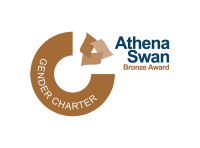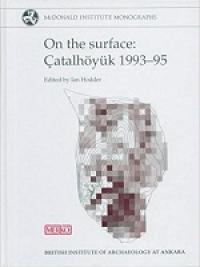
Our full catalogue is presented here by publication date. Our publications are distributed by Pen & Sword Books/Casemate Academic. Direct links to Pen & Sword Books are included in the catalogue where the book is still in print. We also sell some of our publications as e-books.
Publications
Çatalhöyük perspectives | Changing materialities at Çatalhöyük | Dwelling among the monuments | Inhabiting Çatalhöyük | Rethinking materiality | Stone knapping | Explaining social change | Material engagements | Neanderthals and modern humans in the European landscape during the last glaciation | Substance, memory, display | Traces of ancestry | Examining the farming/language dispersal hypothesis | Excavations at Tell Brak, vol. 4 | Prehistoric steppe adaptation and the horse | Ancient interactions | Consuming passions and patterns of consumption | Excavations at Tell Brak, vol. 2 | Trade in illicit antiquities
2005

Çatalhöyük perspectives: themes from the 1995–99 seasons
edited by Ian Hodder
Hardback | £39 / US $78 (Special price: £12.95 / US $24.98) | ISBN 978-1-902937-29-8 | ix + 245 pp. | 90 figs. | 2005 | Buy now
This is Volume 6 in the Çatalhöyük Research Project series. It draws on material from Volumes 3 to 5 to deal with broad themes. Data from architecture and excavation contexts are linked into broader discussion of topics such as seasonality, art and social memory. Rather than assuming that the work of the project is finished once the basic excavation and laboratory results have been presented in Volumes 3 to 5, it has been thought important to present more synthetic accounts that result from the high degree of integration and collaboration which the project has strived for at all stages. In this synthetic volume we most clearly describe the stories we have been telling ourselves during the data recovery/interpretation process. This volume thus provides a contextualization of the work carried out in Volumes 3 to 5; it records the framework of thought within which the data were collected and studied, but it is also the result of the interpretation that occurred in the interaction with data.
Changing materialities at Çatalhöyük: reports from the 1995–99 seasons
edited by Ian Hodder
Hardback | Price £59 / US $120 (Special price: £14.95 / US $29.98) | ISBN 978-1-902937-28-1 | xviii + 395 pp. | 275 figs. | 214 tables | CD | 2005 | Buy now
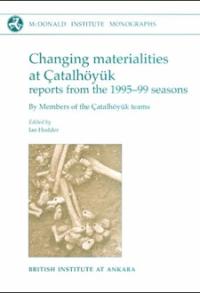
This is Volume 5 in the Çatalhöyük Research Project series. It deals with aspects of the material culture excavated in the 1995–99 period. In particular it discusses the changing materiality of life at the site over its 1100 years of occupation. It includes a discussion of ceramics and other fired clay material, chipped stone, groundstone, worked bone and basketry. As well as looking at typological and comparative issues in relation to these materials, the chapters explore themes such as the specialization and scale of production, the engagement in systems of exchange, and consumption, use and deposition. A central question concerns change through time, and the degree and speed of this change. The occupants of the site increasingly get caught up in relations with material objects that start to act back upon them.
Dwelling among the monuments
edited by Colin Richards
Hardback | £40/US$80 | ISBN 978-1-902937-18-2 | xxii + 397 pp. | 399 figs. | 29 tables | 2005 | Out of print
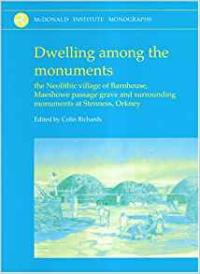
This book provides an engrossing account of the lives of the inhabitants of the village of Barnhouse, a late Neolithic settlement complex in Orkney. The excavation of Barnhouse between 1986 and 1993 constitutes the largest investigation of a Neolithic settlement in northern Britain since the 1920s. It consequently provides an ideal opportunity to reconsider architectural representation, the social construction of identity, and social and ritual practices within a late Neolithic community.
Inhabiting Çatalhöyük: reports from the 1995–99 seasons
edited by Ian Hodder
Hardback | £60 / US $125 (Special price: £14.95 / US $29.98) | ISBN 978-1-902937-22-9 | xviii + 446 pp. | 286 ills. | 160 tables | CD | 2005 | Buy now
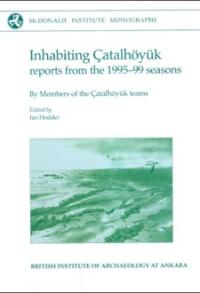
This is Volume 4 in the Çatalhöyük Research Project series. It deals with various aspects of the habitation of Çatalhöyük. Part A embarks on a discussion of the relationship between the site and its environment, using a wide range of evidence from faunal and charred archaeobotanical remains. Part B looks at evidence from human remains which inform us about diet and lifestyle, as well as wider issues of population dynamics and social structure, including a consideration of population size. Part C looks at the sediments at Çatalhöyük, exploring ways in which houses and open spaces in the settlement were lived in.
Rethinking materiality: the engagement of mind with the material world
edited by Elizabeth DeMarrais, Chris Gosden & Colin Renfrew
Hardback | £45 / US $95 | ISBN 978-1-902937-30-4 | viii + 280 pp. | 62 figs. | 3 tables | 2005 | Buy now
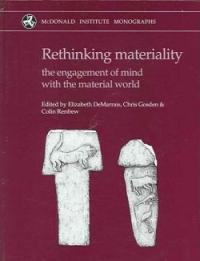
What is the relationship between mind and ideas on the one hand, and the material things of the world on the other? In recent years, researchers have rejected the old debate about the primacy of the mind or material, and have sought to establish more nuanced understandings of the ways humans interact with their material worlds. In Rethinking Materiality contributors debate the significance of key thresholds in the human past.
Stone knapping: the necessary conditions for a uniquely hominin behaviour
edited by Valentine Roux & Blandine Bril
Hardback | £60 / US $120 (Special price: £12.95 / US $25.98) | ISBN 978-1-902937-34-2 | xii + 356 pp. | 143 figs. | 2005 | Buy now
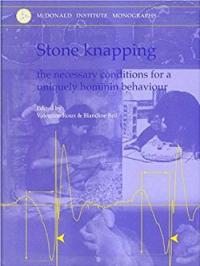
How were early stone tools made, and what can they tell us about the development of human cognition? This question lies at the basis of archaeological research on human origins and evolution, and Stone Knapping fulfils a growing need among advanced students and researchers working in this field. The individual chapters by a range of leading international scholars approach stone knapping from a multidisciplinary perspective that embraces psychology, physiology, behavioural biology and primatology as well as archaeology.
2004
Explaining social change: studies in honour of Colin Renfrew
edited by John Cherry, Chris Scarre & Stephen Shennan
Hardback | £35/US$70 | ISBN 978-1-902937-23-6 | xiv + 239 pp. | 87 figs. | 26 tables | 2004 | Out of print
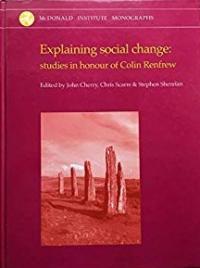
Over the past 30 years, social archaeology has become one of the central fields of archaeological research, placing human societies at the heart of our understanding of the human past. Colin Renfrew has been a key champion of social archaeology, and the present volume brings together a series of papers on the occasion of his retirement. They have been written by colleagues and former students, and touch upon many of the themes that he himself has studied and about which he has written so persuasively and engagingly: the development of the human mind, trade and exchange, social change, chiefdoms and states, and the archaeology of island societies.
Material engagements: studies in honour of Colin Renfrew
edited by Neil Brodie & Catherine Hills
Hardback | £35 / US $70 (Special price: £12.95 / US $25.98) | ISBN 978-1-902937-26-7 | xii + 180 pp. | 101 figs. | 2004 | Buy now
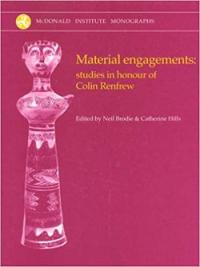
Neanderthals and modern humans in the European landscape during the last glaciation
edited by Tjeerd H. van Andel & William Davies
Hardback | £35/US$70 | ISBN 978-1-902937-21-2 | xviii + 265 pp. | 92 figs. | 41 tables | 2004 | Out of stock
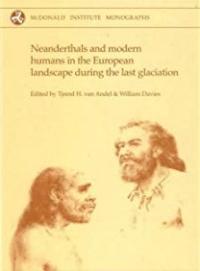
What role did Ice Age climate play in the demise of the Neanderthals, and why was it that modern humans alone survived? A team of international experts from a wide range of disciplines have worked together to provide a detailed study of the world occupied by the European Neanderthals between 60,000 and 25,000 years ago. The results provide revolutionary insights into the glacial climate of this period and the landscapes and resources that influenced late Palaeolithic life-styles.
Substance, memory, display: archaeology and art
edited by Colin Renfrew, Chris Gosden & Elizabeth DeMarrais
Hardback | £45/US$90 (Special price: £14.95/US$29.98) | ISBN 978-1-902937-24-3 | vi + 170 pp. | 107 col. figs. | 2004 | Out of stock
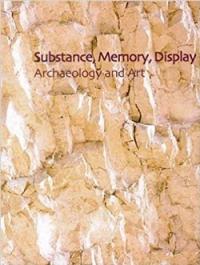
Contemporary art and modern archaeology are increasingly seen to share much common ground yet their interactions have yet to be fully investigated. This innovative volume explores key themes, including the role of display in art, in the practice of archaeology and in daily life, and the material transformations which underlie the physical reality of the archaeological record as much as the creative processes of the contemporary artist. Prominent practising artists Simon Callery and Antony Gormley provide seminal papers considering the role of materiality and embodiment in their own work, exploring issues that are directly relevant to current archaeological thinking. They are joined by archaeologists actively involved with visual approaches, including Anwen Cooper, Christopher Evans, Steven Mithen, Joshua Pollard, Nicholas Saunders, Aaron Watson and the editorial trio.
Traces of ancestry: studies in honour of Colin Renfrew
edited by Martin Jones
Hardback | £30 / US $60 | ISBN 978-1-902937-25-0 | xii + 161 pp. | 45 figs. | 9 tables | 2004 | Buy now
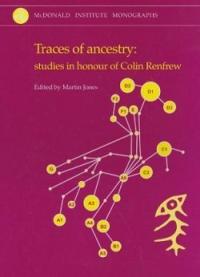
In 1987, Colin Renfrew's Archaeology and Language challenged many perceptions about how one language family spread across large parts of the world. In doing so he re-invigorated an important exchange between archaeologists and historical linguists. At precisely the same time, a quite separate field, human genetics, was making considerable steps forward in the elucidation of human ancestry. These three parallel lines of enquiry into genes, words, and things have, over the ensuing two decades, entirely transformed our perceptions of the human past.
2003
Examining the farming/language dispersal hypothesis
edited by Peter Bellwood & Colin Renfrew
Hardback | £50 / US $85 (Special price: £14.95 / US $29.98) | ISBN 978-1-902937-20-5 | xiv + 505 pp. | 82 ills. | 25 tables | 2003 | Buy now
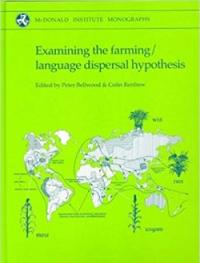
Linguistic diversity is one of the most puzzling and challenging features of humankind. Why are there some six thousand different languages spoken in the world today? Why are some, like Chinese or English, spoken by millions over vast territories, while others are restricted to just a few thousand speakers in a limited area? The farming/language dispersal hypothesis makes the radical and controversial proposal that the present-day distributions of many of the world's languages and language families can be traced back to the early developments and dispersals of farming from the several nuclear areas where animal and plant domestication emerged.
Excavations at Tell Brak, vol. 4
edited by Roger Matthews
Hardback | £75 / US $135 (Special price: £19.95 / US $39.98) | ISBN 978-1-902937-16-8 | xviii + 446 pp. | 333 figs. | 70 tables | 2003 | Buy now
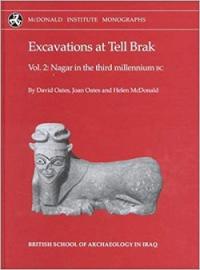
Tell Brak in Syria is one of the largest and most important multi-period sites in northern Mesopotamia. Excavations in 1994–1996 cast new light on everyday life at the settlement through several phases of occupation from the early fourth millennium BC to the second millennium BC. Volume 4 in the Tell Brak Monograph series provides an account of the architecture, artefacts, and environmental evidence, supported by a program of radiocarbon dating. The results emphasize the indigenous nature of cultural development in Upper Mesopotamia during these millennia.
Prehistoric steppe adaptation and the horse
edited by Marsha Levine, Colin Renfrew and Katie Boyle
Hardback | £45/US$80 | ISBN 1-902973-09-0 | xii + 428 pp. | 192 figs. | 40 tables | 2003 | Out of print:
e-book | £24 | ISBN 978-1-902973-56-4 | Buy now
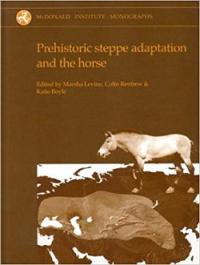
The domestication of the horse was one of the most significant events in the development of human societies, ushering in new modes of transport and warfare and generating social and political change. This volume seeks to examine the origins of horse husbandry and pastoralism - especially nomadic pastoralism - in the Eurasian steppe. In bringing together archaeologists and archaeozoologists from Asia, Europe, and North America it provides a wide-ranging overview of issues and evidence for the development of Central European societies from the Neolithic to the Iron Age.
2002
Ancient interactions: east and west in Eurasia
edited by Katie Boyle, Colin Renfrew & Marsha Levine
Hardback | £45 / US $80 | ISBN 978-1-902937-19-9 | xii + 344 pp. | 171 ills. | 22 tables | 2002 | Out of print
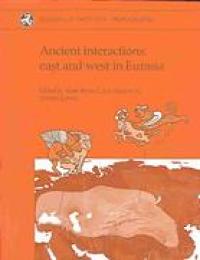
The history and archaeology of the Scythians and other steppe peoples are relatively familiar, but what of their predecessors who colonized and occupied this vast region, from the Carpathians to China, before the Iron Age? The papers in this volume provide an overview and reassessment of the period from the Neolithic to Iron Age in an area which covers approximately one-sixth of the earth's land surface. The subject matter of the papers ranges broadly from East to West on a number of major themes: the development of pastoral economies; the diffusion of ideas, and the movement of peoples throughout this region and into adjoining regions.
Consuming passions and patterns of consumption
edited by Preston Miracle and Nicky Milner
Hardback | £20 / US $35 | ISBN 978-0-9519420-8-6 | vi + 136 pp. | 48 figs. | 16 tables | 2002 | Out of Print:
e-book | £18 | ISBN 978-1-902973-55-7 | Buy now
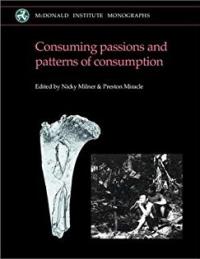
What we eat, and how we eat, are and always have been fundamental to the structuring of social life, both in the past and in the present. The remains of food are also among the most common archaeological finds. The papers in this volume explore and develop ways of using food to write social history; they move beyond taphonomic and economic properties of 'subsistence resources' to examine the social background and cultural contexts of food preparation and consumption. Contributions break new ground in method and interpretation in case studies spanning the Palaeolithic to the Present and from the Amazon to the Arctic. This volume will thus be essential reading for all archaeologists, anthropologists and social historians interested in prehistory and history of food consumption.
2001
Excavations at Tell Brak, vol. 2: Nagar in the third millennium BC
edited by David Oates, Joan Oates and Helen McDonald
Hardback | £95 / US $150 | ISBN 978-0-951942-09-3 | xxxii + 644 pp. | 493 figs. | 60 tables | 2001 | Buy now

Tell Brak, ancient Nagar, was one of the most important cities in northern Mesopotamia in the third millennium BC and a focus of long-distance trade. It was also, for about a century, a provincial capital of the Akkadian Empire founded by Sargon of Agade. The major Akkadian buildings at Tell Brak are the first well-preserved examples to be discovered at any site, and include a great ceremonial complex and a unique caravanserai that housed the donkey caravans bringing metals from Anatolia. During the ritual closure of these buildings beautiful silver jewellery was deposited, along with numerous copper/bronze tools and some of the caravan donkeys themselves.
Trade in illicit antiquities: the destruction of the world's archaeological heritage
edited by Neil Brodie, Jennifer Doole and Colin Renfrew
Hardback | £25/US$45 | ISBN 978-1-902937-17-5 | xii + 172 pp. | 73 figs. | 11 tables | 2001 | Out of print
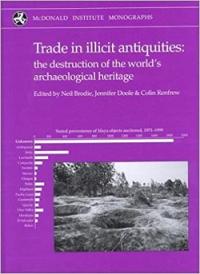
All over the world archaeological sites are being looted to feed an ever-expanding antiquities market. The phenomenon has been well-documented, by journalists and TV documentaries as much as by academic study, but its true scale remains a matter for conjecture. With this in mind in October 1999 the McDonald Institute convened an international symposium of archaeologists and other interested parties, which allowed them to give accounts of looting in their own countries, share their experiences, and to consider possible remedies or preventative measures. The proceedings of the Symposium are now published in this volume.

